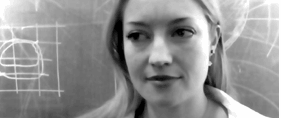 |
||
| softcore news < studios < articles < hardcore firms < jobs < schools < links < calendar < sources < discussion < how to < Check out Bruce Sterling's and Engram's Offsite! |
||


> > archived articles > write for core! be famous!
|
One of the promising and critical aspects of modern technology is the way it has, and will continue to, incorporate the artist/designer with science/technology. Designers think differently than scientists – human sensibility versus pragmatic rationalism and process. Over the past twenty years, the introduction of powerful digital media technology has spawned a generation of designer/technologists. Future developments of digital habitats will demand design intervention, focusing on the wholeness of human experience when considering input as well as reaction.
One departure from the convention is to shift focus from how we react to computers and other technological devices to how they can respond to us; how does the machine perceive, sense and understand the user? Digital media artists have been exploring the potential of machine responsiveness to user since the inception of their media. Current work by artist Daniel Rozin utilizes custom software to replicate images of the viewer via ‘digital watercolors’ or rotating blocks of a wooden ‘mirror’. In this installation, balanced between art and multimedia, the computer sees the viewer and translates this back to be seen; a sort of staring feedback loop. Several recent projects from multimedia group No-Organasation – Cityscape, Pixelzoom and Pattern to name a few, deal with computer reaction and interaction to sound and human voice, some enacting manipulation of image by sound and others manipulating data. The Future Computing Environment group at Georgia Tech is in the process of refining a concept they call a mechanism for natural user identification. Also dubbed Smart floor, the system uses human presence acted upon by gravity to measure footfalls and strides and the then identify and track the ‘pedestrian’. The only user input needed here is walking across the room. Various examples of environment-specific interfaces are already in use, many at your neighborhood hospital, to determine and record our physical statistics: weight, body fat, heart rate, breathing rate, our DNA makeup. Innovative thinking can translate and apply these readings as well as a host of additional unconscious outputs to achieve a more meaningful and effective interaction with technology.
Current explorations in interactive media and physical computing are more than dazzling exhibits to enjoy after a couple of cocktails at your local gallery. They are more than an opportunity for artists and designers to engage self-serving displays of science and technology. These examples are proactive investigations and discoveries critical to the future trajectory of our daily habitats and environments. As traditional consumer electronics companies push the integration of technology into the physical world, they are developing scenarios and products for the future. As designers, there is an obligation to continue to rigorously explore the relationship between information and body, virtual and physical, action, reaction and interaction. Doing so will develop new scenarios where physical computing can affect positive changes in the way we interact with data, environments, and the other people in our lives. Links:
Lisa Sundbeck received her B.S. in Environmental Design from Texas A&M University. She lives in New York City and is currently working on her Master of Architecture at Columbia University. Current fascinations involve concepts of a digital habitat and emerging theories of Transarchitecture. |
||||||
|
|
||||||
| >>
back to top >> back to core |




